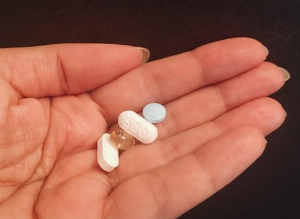Diabetes: How to improve access to treatment?
Published 18 Oct 2021 • By Candice Salomé
Type 2 diabetes affects about 90% of the diabetic population. In the UK, more than 4,5 million people have diabetes, that is about 7% of the population. Type 2 diabetes is a real pandemic on a worldwide scale.
Treatment for type 2 diabetes is based mainly on lifestyle and nutrition (balanced diet and regular physical activity), but sometimes an oral medication or insulin is also needed.
However, the high cost of new patented medications, as well as the old ones, such as insulin, makes them too expensive for a lot of patients.
So, how can these medications become more available and their price more affordable?
We explain everything in our article!

Type 2 diabetes, formerly known as noninsulin-dependent diabetes mellitus, or adult-onset diabetes, is a form of diabetes which develops at a more advanced age, than type 1 diabetes. Still, today the disease is spreading to a younger population. What are the reasons? The absence of balanced diet and physical activity, starting from childhood, which stimulates the expression of diabetes genes.
The WHO (World Health Organization) has recently published a new edition of its model lists of essential medicines and essential medicines for children.
These lists contain new treatments for various types of cancer, insulin analogues and new oral medications for diabetes, but also new treatments for people who are undergoing smoking cessation, among others.
What is insulin?
Insulin is a hormone secreted by β-cells of the islets of Langerhans, or pancreatic islets, located in the pancreas. In a healthy person, this hormone is secreted continually and regulates mainly the blood glucose rate (also called glycaemia).
During a meal, and especially during the ingestion of carbohydrates, glycaemia increases and causes insulin secretion. In a healthy person, the glycaemia increases slightly and decreases to a normal rate. This way it is converted into reserves and energy.
In a person suffering with diabetes, this system does not function correctly.
Type 1 diabetics must inject themselves with insulin starting from the discovery of the illness. .
Type 2 diabetics must turn to insulin therapy when the condition progresses. That means, they use insulin therapy when insulin is not produced by their pancreas in quantities large enough anymore, despite the oral treatments and good hygiene and diet.
Insulin is one of the key treatments for diabetics. This treatment is celebrating its 100th anniversary this year. However, a lot of diabetics have to fight to get access to it, because of its high price.
What is the purpose of the model lists of essential medicines?
Model lists of essential medicines, published by the WHO, correspond to global priorities in questions of health, and identify the most advantageous treatments that have to be available and affordable for everyone.
However, the high cost of new patented medications and of some older ones, such as insulin, makes them too expensive for many patients.
According to Dr Tedros Adhanom Ghebreyesus, the director-general of the World Health Organisation, a lot of patients who need insulin, encounter financial problems and have to live without it, thus putting their lives at risk.
In order to guarantee access to insulin to all patients who need it, it was of primary importance for the WHO to add insulin analogues to their model lists. Moreover, the WHO wants to put more effort into guaranteeing an affordable access to all insulin-based products, and expanding the use of biotherapies.
In fact, the limited offer of insulin as well as its high cost in many low- or middle-income countries, is a major obstacle to treating diabetes.
Only three drug manufacturers (Eli Lilly, Novo Nordisk and Sanofi) control the major part of the market and production is concentrated in a small number of manufacturing sites.
Because of low competition, high prices are sometimes prohibitive for a lot of patients and health systems.
Therefore, the WHO decided to include insulin analogues of prolonged therapeutical activity (insulin degludec, detemir et glargine) and their biosimilars* into their recent update.
*A biosimilar is a medication which, as any other biological treatment, is produced from a cell, a living organism, or a derivative. Its efficiency and side-effects are equivalent to those of the original biological medicine.
What is this going to change for diabetics?
This decision aims at improving access to diabetes treatments by multiplying therapeutic options. In fact, putting a medicine on the list means that it can be eligible to pre-qualification programme conditions of the WHO.This pre-qualification can thus succeed in launching a large number of biosimilars, the quality of which can be guaranteed, on international markets. The new competition will be able to reduce prices and offer a larger choice of products.
Moreover, insulin analogues of prolonged therapeutical activity offer additional clinical advantages to patients. Due to their long period of action, patients' glycaemia can be controlled over a longer period of time without the need of a booster.
It is especially beneficial to diabetics whose glycaemia is dangerously low on human insulin. It was proven that using insulin analogues offers patients a better quality of life.
The new version of the WHO's list also contains sodium-glucose cotransporter-2 inhibitors (SGLT2) (empagliflozin, canagliflozin and dapagliflozin). These medicines are prescribed as second-line treatments for adults affected with type 2 diabetes, as they allow the elimination of glucose through urine.
These medications, administered orally, offer multiple advantages, in particular, a lower risk of death, renal failure or cardiovascular diseases.
Adding these medicines to the list, still expensive and with a patent obligation, is accompanied by the WHO's recommendations, on which the Organisation has been working hand in hand with Medicines Patent Pool, to make them more available, thanks to prospective licence agreements with patent holders. This could make it possible to manufacture generic drugs and deliver them to low- or middle-income countries.
Give it a like or share your thoughts and questions with the community in the comments below!
Take care!
Sources:
L’OMS donne la priorité à l’accès aux traitements contre le diabète et le cancer dans les nouvelles listes de médicaments essentiels, OMS
Diabète de type 2, Centre européen d’étude du diabète
L’insuline : le traitement du diabète par l’insulinothérapie, Fédération Française des diabétiques
Diabetes in the UK: 2019, pubmed.gov
Diabetes statistics, diabetes.org.uk
1 comment

You will also like

Diabetes: Discrimination, Professional Life, Plan Ahead... What do patients say?
9 Nov 2018 • 13 comments

 Facebook
Facebook Twitter
Twitter

